
Munich is a city with a rich history and a place where the residences of the monarchs (rulers) of Bavaria were located.
During the history of Munich, several residences of the rulers were erected, which have survived to the present day and within the walls of two of which are now located some of the main museums not only in Munich, but also in Bavaria and Germany as a whole.
Old courtyard (Hof Alter / Alter Hof), a former Ducal Palace and the first Imperial residence of the rulers of Bavaria, Dating to the 12th century when the old Palace was built as a castle.
In 1255 the Alter Hof was the residence of Ludwig II, Duke of Bavaria. Later, when Ludwig IV, the castle became a permanent Imperial residence and remained so until the 15th century.
Today, the Old courtyard is public and is a complex of buildings with an inner courtyard. Read more about the Old yard...


When the expansion of the city residence (Old yard) has become insecure, in 1385, a little to the North began the construction of the so-called "New residence".
Later, the New residence became a residence of the rulers and turned into a magnificent Palace, which was the largest city Palace in Germany and currently is called the Munich residence (Münchner Residenz).
Today Munich is one of the most important art museums in Europe with courtyards, the cuvillies-theater, the court Church and the library.
The Munich residence is located in Munich's Old town, within walking distance from the Central square of the city Marienplatz, at: Residenciales, 1 (Residenzstraße). The website of the Munich residence: residenz-muenchen. Read more about Munich residence...
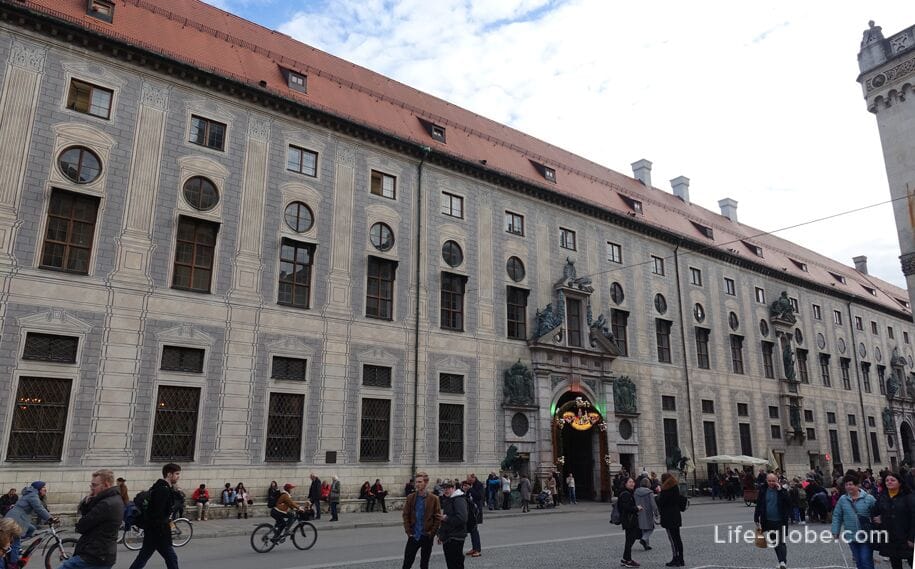
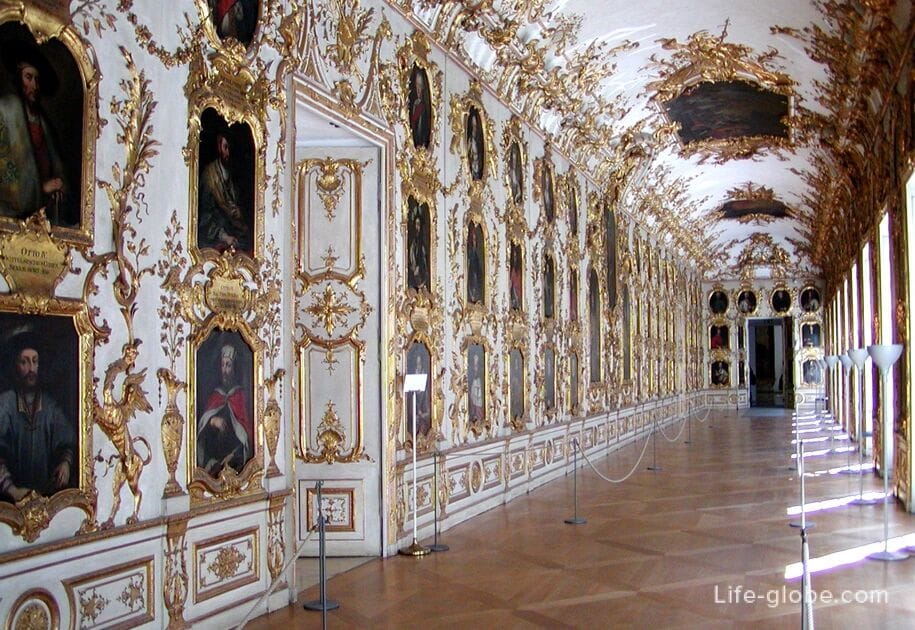
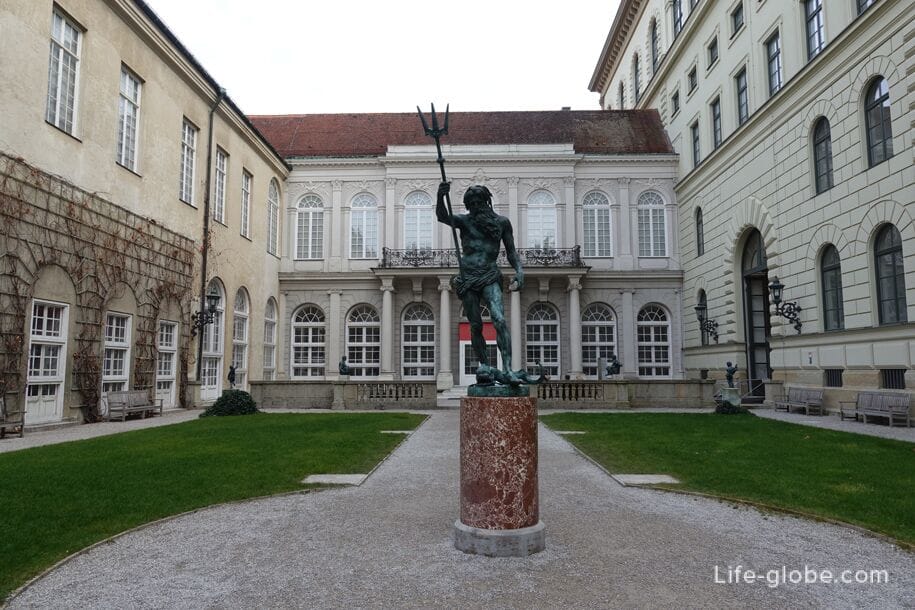
To the North wing of the Munich residence adjoins the Hofgarten Park (Hofgarten), which was originally built as a court garden (inner garden) in Munich residence.
Today is a public Park with a wall and attractions, places for recreation and walking paths.
The main entrance to the Park overlooks the square Odeonsplatz. Park address: Hofgartenstrasse, 1 (Hofgartenstraße). Read more about Hofgarten Park...
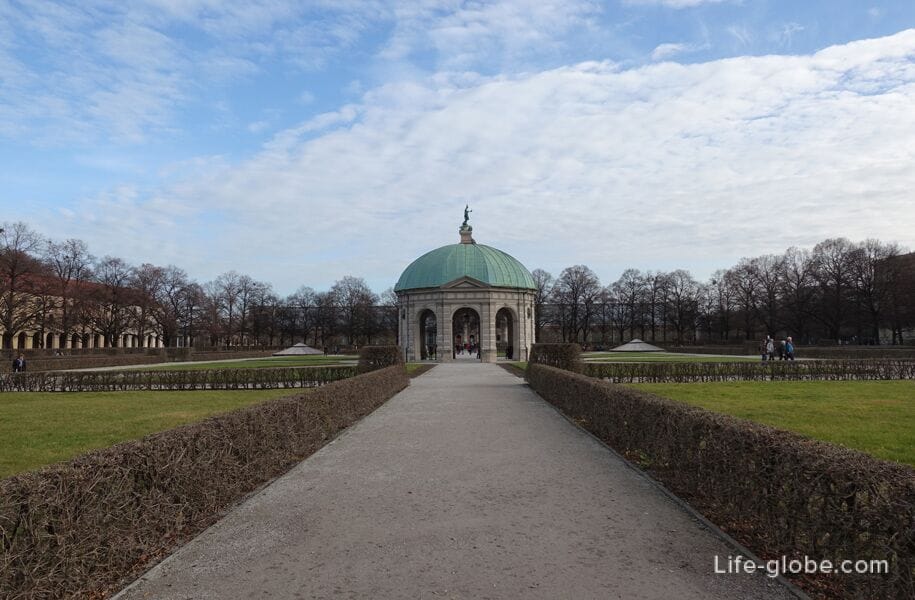
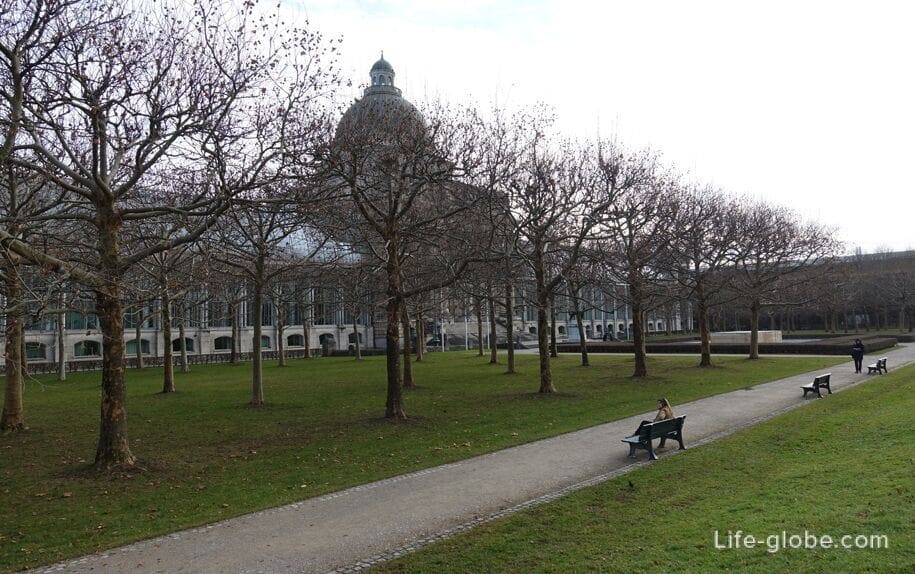
Nymphenburg Palace (Schloss Nymphenburg), is a Palace complex that is one of the majestic Royal palaces in Europe.
The Palace was built starting from the year 1664 by the decree of the elector Ferdinand Maria to his wife Henriette Adelaide of Savoy, who earlier gave birth to the long awaited heir to the throne - of Prince-elector max Emanuel (later king Maximilian II).
In Munich for many years served as the main summer residence of the rulers of Bavaria of the Wittelsbach dynasty.
Some of the halls and rooms of the Palace still display their original ornaments in the Baroque style.
The Palace complex also includes two museums: the Museum of carriages (Marstallmuseum) and the porcelain Museum (Porzellanmuseum).

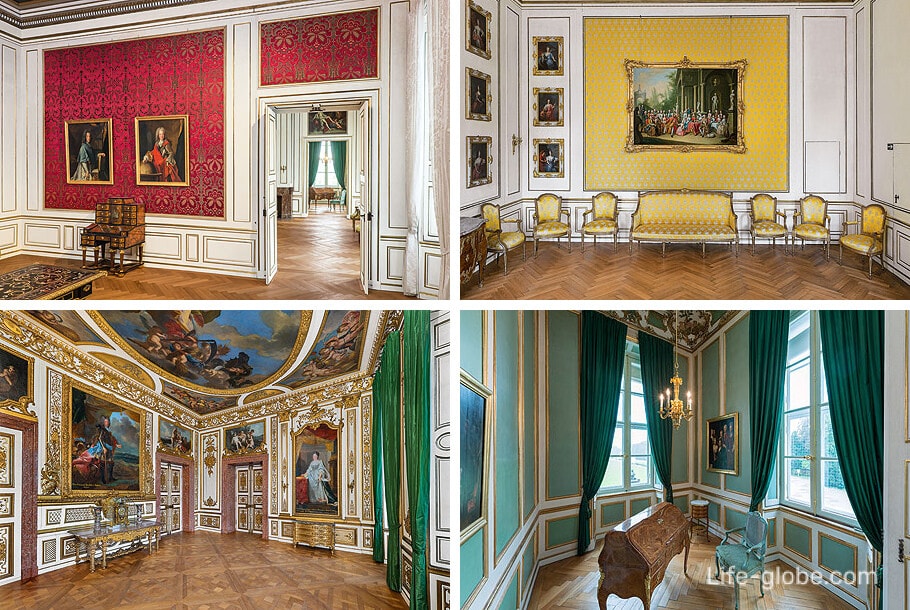
Next to the Palace is the Park of the Nymphenburg Palace, which occupies nearly 300 hectares and which are: a center channel with the "Big cascade" - waterfall in the Baroque style; the fountains, alleys and walkways; rental restaurant; statues and sculptures; two lakes (Badenburg and Kleiner) and monomer Apollo-Tempel (Apollo-Tempel) - the temple is a rotunda, built according to the plans of Leo von Klenze in the years 1862-1865.
For a fee in the Park you can visit several pavilions - palaces in miniature.
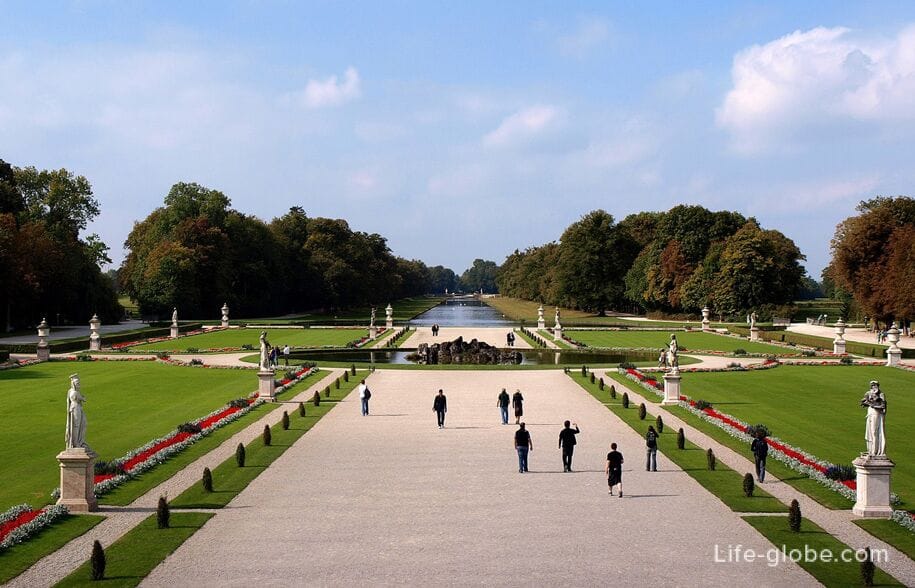

The Nymphenburg Palace with its Park is located in the Western part of Munich in the district Neuhausen-Nymphenburg (Neuhausen-Nymphenburg), at the address: Schloß Nymphenburg 1. The website of Nymphenburg Palace: schloss-nymphenburg. Read more about Nymphenburg Palace and the surrounding Park...
Blutenburg castle, also known as Blutenburg castle (Schloss Blutenburg), is not literally the Palace of the kings and rulers of Munich, is an old Ducal country house located on the Western outskirts of Munich, on the river Würm (Würm).
The original location of the castle were fortifications that existed in the 13th century. The castle was built for the Bavarian Duke Albrecht III in 1438-1439 years as a hunting Lodge, replacing an older castle burned during the war.
Today has left from the castle: the residential tower, the remains of which was discovered in 1981, the chapel, the part of the ring of walls with towers and several buildings.
In the castle is: international youth library (Internationale Jugendbibliothek), which is part of the Museum dedicated to the famous author of children's books by Michael ende (Michael Ende Museum) and the Palace chapel - a masterpiece of late Gothic, which is still preserved stained glass Windows, a cycle of statues of the apostles 1490-1495 years and the altars with three paintings created in 1491 by Jan Polack.
In the castle restaurant "Schlossschänke Blutenburg" with outdoor lake terrace. Private rooms at the castle can be rented for private events.
During the year, the castle and the surrounding area spend the holidays, festivals and other events (e.g. Christmas market).
Address of the castle: Zeltweg, 15 (Seldweg). The castle site: blutenburg. The website of the restaurant: schlossschaenke-blutenburg.
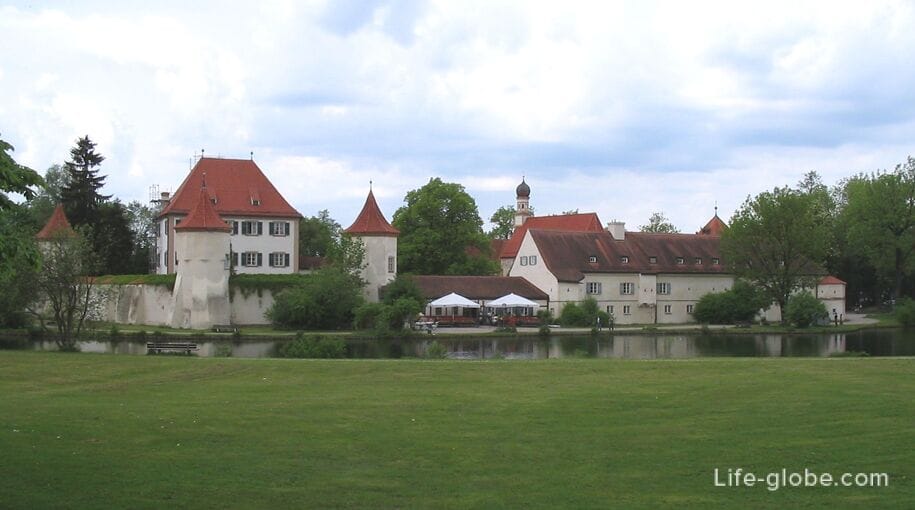
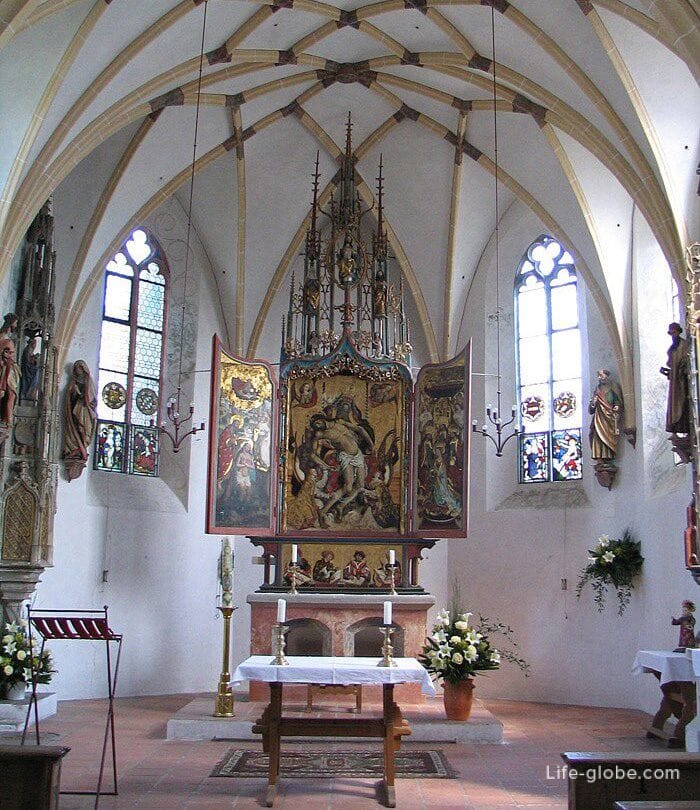
In the vicinity of Munich, in the municipality of grünwald, is another former hunting estate of the rulers (the Wittelsbach dynasty) - castle Grunwald (Burg Grünwald).
Grunwald castle is the only castle which remained in the vicinity of Munich.
The location of the castle on the banks of the ISAR, probably dates back to a fortified complex with a Roman watchtower, existing already before the year 1000.
In the 12th century, the castle was first mentioned as a possession of the counts of Andechs. In 1272 it passed into the possession of the family of Wittelsbach. The current structure mostly dates back to the end of the 15th century, when the castle was extended on the occasion of the wedding of Albrecht IV.
Within the castle walls is the Museum of the castle grünwald (Burgmuseum Grünwald) with exhibits from the archaeological State collection Munich.
In the East wing of the castle hasa cafe, Museum shop and space Museum pedagogic center of Munich. A large room is used for special exhibitions, but can also be rented for events of any kind. In the West wing are located: a permanent exhibition devoted to aspects of Roman civilization, the history of the castle Grunwald and castles in Bavaria.
You can climb the castle tower and admire views of the valley of the ISAR.
Address of the castle: Zeillerstraße 3, Grünwald. The castle site: zweigmuseen/gruenwald.

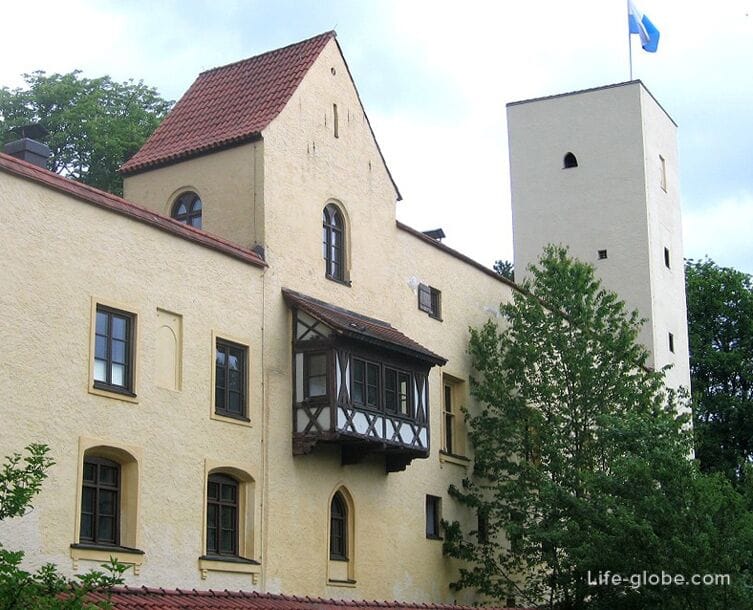
All accommodation facilities in Munich (hotels, apartments, guest houses, etc.), including near palaces and castles, you can view and book here